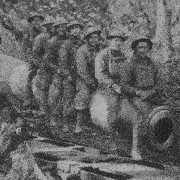|
lmao
|
|
|
|

|
| # ? May 24, 2024 21:28 |
|
Danann posted:https://twitter.com/StarboySAR/status/1650917659834458114 I had to search for the news myself because this ship is only 5 year old. https://www.telegraph.co.uk/news/2023/04/23/3bn-warship-hms-prince-of-wales-stripped-for-parts/
|
|
|
|
KomradeX posted:I got into a small discussion at work today with a coworker about how America will lose the war its provoking and people really are invested in our invincible Wunderwaffe will always have us win whats their excuse for all the recent war losses
|
|
|
|
i would imagine something along the line of "not finishing the job"
|
|
|
|
Mister Bates posted:a significant portion of the other British aircraft carrier's nominal fighter complement are literally Americans, as in, American aviators flying American aircraft and operating under American command, which is to say that if and when the ship does anything at all it is only because the US has deigned to allow them to More MIC business for the AUKUS.
|
|
|
stephenthinkpad posted:I had to search for the news myself because this ship is only 5 year old. This was paywalled but I found a different article with some sweet quotes quote:Now Navy top brass have begun stripping the carrier – a process known as 'cannibalisation' – which will render HMS Prince of Wales inoperable for much longer. Lift chains, which allow fighter jets to be raised from below deck, electrical systems and sections of the ship's gas turbines have been taken out. Where's the big brain shipping guy to tell us that actually they could turn this around and ramp up capacity any time they want
|
|
|
|
|
Path of least resistance wins again. The free market works.
|
|
|
|
HallelujahLee posted:whats their excuse for all the recent war losses Same as usual, we didn't go all out and that none sense. He also pulled out the Russia has lost half their tanks thing. Which at that point I was just like I disagree and think we'd loose, not that it matters cUse nukes get launched
|
|
|
|
Slavvy posted:This was paywalled but I found a different article with some sweet quotes I see no way the Brits can turn this around.
|
|
|
|
the only people more dumb than the British officer class are the people in procurement i don't think a single new ship or land vehicle in the last 50 years has not been full of dumbshit design decisions or just a faulty piece of poo poo it only got worse once we lost state owned industries and everything became a MIC grift
|
|
|
|
Slavvy posted:This was paywalled but I found a different article with some sweet quotes This is a metaphor for the monarchy. They stripped Charles III of useful parts and grafted them on to HRH Elizabeth II so now he is a shambling wreck of a man.
|
|
|
|
It sounds like someone misunderstood Liz’s order to harvest Chuck’s organs.
|
|
|
|
Regarde Aduck posted:the only people more dumb than the British officer class are the people in procurement The last great designer of the Royal Navy, David K. Brown, wrote a series of massive books detailing the minutia of ship design from 1815-1970. If you haven't read them, go out and buy Before the Ironclad: The Development of Ship Design, Propulsion, and Armament in the Royal Navy, 1815-60, Warrior to Dreadnought: Warship Development 1860–1905, The Grand Fleet: Warship Design and Development 1906-1922, Nelson to Vanguard: Warship Design 1923-1945 and Rebuilding the Royal Navy: Warship Design Since 1945. I'm not going to emphasize text, but one of you with a keen eye should in your quotes. I'll just hint that Maggie and her successors played a part.Let's examine what changed, perhaps there's a minor clue somewhere... "Until Recently, British warships were designed within the Admiralty or Ministry of Defence. Ship Department and its predecessors, DNC Department, E-in-C, etc, operated with a small design section, which would draw on the expertise of a considerable number of specialist sections. Initially, these dealt with the traditional naval architecture subjects of Stability, Speed, Seaworthiness and Strength while the E-in-C and DEE had their own specialist groups, such as Gearing, or Batteries. Following the merger of the old RCNC with the RNES, some were merged – Materials (Steels to paints), Stealth, Fire, Battleworthiness and others. In earlier years these specialists would respond to queries from design sections and reply from their own experience or, where necessary, task the relevant research establishment – AEW, NCRE, AEL, AML etc. This interface was valuable, as it was not uncommon for a busy design section to ask the wrong question, and even more common for them to fail to understand or apply the reply. Increasingly, the role of the specialist sections changed to the setting of standards, first in the ‘General Hull Specification’ and later in ‘Naval Engineering Standards’. Once these standards were soundly based, the specialist sections were given authority to monitor compliance, though there was always a procedure to grant exemptions or make changes where necessary. These standards were derived from hard and often painful experience, and modified in the light of new technology and changes in the availability of materials. Such standards must change from time to time, and it is as proper for the designer to challenge them as it is foolish for him to ignore the accumulated wisdom contained in them” “For half a century after the end of the Second World War there was a clear threat from the Soviet Union. At sea the perceived threat came first from the powerful cruisers of the Sverdlov class, which had an important effect on RN planning – for example, the 5in cruiser destroyer was seen as a Sverdlov killer (as was the battleship Vanguard). At the same time there was an enormous build-up of the Soviet submarine force. The Korean War was seen (perhaps wrongly) as demonstrating Soviet will for conquest. The Admiralty dreamt of restoring something like prewar glory and only slowly realised that the economy would not support a large navy. The protection of the remains of the Commonwealth – ‘East of Suez’ – was important while there were a number of small but troublesome confrontations. The Korean War led to fairly large frigate programmes and a very large programme of minesweepers. Gradually, the primary task was seen as protection of convoys bringing US troops across the Atlantic to reinforce the central and northern fronts. The Soviet naval air force, based on the Kola Peninsula, was seen as an increasing threat and the carrier CVA-01 was designed to counter this threat by pre-emptive strikes. “With the demise of the fleet carrier force the RN’s role became even more concentrated on escort work. More recently the Falklands War, the 1991 Gulf War, and Afghanistan have all shown the value and flexibility of sea power, which is much less dependent on land bases and minimises problems of overflight of neutral or hostile territory. This has led (2002) to a new amphibious force and the promise of new carriers equipped with the Joint Strike Fighter.” “Shortage of money was and is the most obvious constraint, and funds for the navy have never been abundant. However, naval manpower has affected the size of the fleet and the design of ships, leading in particular to dramatic improvements in living conditions to help attract and retain personnel. There are other limiting factors, perhaps the capability of British industry being the main one. One may instance the introduction of the gas turbine, in which British aviation firms were world leaders, replacing steam turbines whose supporting industry was dwindling. Competition may have been effective in keeping prices down but, in 2002, almost all major warship building is in the hands of BAE Systems.” “In ship technology (hull and machinery) the UK has, in the past, led in many areas, and been well up in others. It is suggested that much of this success was due to the close links between the RN, design team and naval research establishments working in hydrodynamics and structures. By far the greatest British achievements have been in the field of noise reduction, so that RN surface ships and submarines have been the quietest, a full generation ahead of their rivals. From about 1960, 10 years before other navies, AEW Haslar was able to design propellers with about double the quiet speed of earlier designs, and much quieter even above that speed when cavitation has begun. Air bubble screening was developed at AUWE, Portland, with ‘Agouti’ adding to the performance of quiet propellers, whilst ‘Masker’ screened machinery noise. Pumpjets from ARL Teddington further reduced submarine propulsor noise. AEL, West Drayton, and NCRE, Dunfermline and Rosyth, did wonders in reducing machinery noise.” “Questionnaires on seakeeping among NATO navies consistently showed British ships, designed by the Admiralty, as leaders. Submarine pressure hull design has been led by NCRE, whilst Ship Department with help from ARL developed the first full computer aided ship design system. The E-in-C led the way on gas turbine propulsion in NATO. New materials – GRP, steels, paints – have made ships stronger and reduced the maintenance load. It is notable that many of these advances may be attributed to a single individual and, where possible, these have been named in this book.” “One of the greatest post-war US naval architects, Dr Reuven Leopold, summarised his doctrinal thesis in a paper on innovation. His two examples of successful innovation were both British – gas turbines and fin stabilisers. He even gave a lecture in Ship Department, Bath, on this theme and was rather surprised that his British audience were not sure that the decisions taken were right and, even if they were right, that they had not been taken for the wrong reasons. NATO Committees formed a very competitive environment: to address one’s colleagues on the theme ‘First Again’ was very gratifying.” “These have been described and, at least in part, appraised in earlier chapters, and here one can only draw a few general conclusions. The first group of frigates were outstanding. The Whitbys and their derivatives were truly great, whilst the diesel-engined ships were inevitable given the state of the UK turbine industry – and some are still giving good service. The Blackwoods were uncomfortable but had almost the AS capability of a Whitby at half the cost. They would have been better and probably cheaper with simpler structure making them a little bigger. They were first-rate in ASW, second-rate only because they had little capability for any other role. Had war come, they would have been better appreciated.” “The ‘County’ class had an excellent hull with novel and successful machinery but was let down by the failure of Sea Slug to live up to expectations. Bristol would have been more capable and cheaper but lost its role with the cancellation of the carriers. The Type 42 proved a valuable type of ship but was too small. The Type 22 was the true Leander replacement and a success. Carriers exemplify the saying ‘Big is Beautiful’. Contractors for the new carriers under development have found that increasing the size actually reduces the cost, due to easier installation and maintenance. Many people both in the Admiralty and in industry had been saying this for years but no one listened.7 The Invincibles were another success. At the other end of the scale, MCM vessels starting with the ‘Ton’ and ‘Ham’ classes have been very successful. GRP construction has been developed in partnership with Vosper-Thornycroft through Wilton, the ‘Hunt’ class to the Sandowns, and their capability has been proved in several operations.” “The principal attributes of an attack submarine are speed, diving depth and silence. British submarines are constrained in cost, and many good designs have been dropped for that reason, but they are the quietest. Valiant started from scratch and hence is the author’s personal choice for all-time greatness, but Swiftsure and Trafalgar still improved on that good start. Comparisons of designs between different navies with differing roles and constraints are difficult but one such exercise is summarised in Appendix 5.” “It is hoped that the reader will now be convinced that most of the decisions made by the Naval Staff and Ship Department were correct, or at least inevitable. Technically, there has been a willingness to innovate shown by novel designs such as the Whitby, Invincible, quiet submarines and the GRP minehunters. New ideas continue to flow, illustrated by the trimaran Triton and the WR-21 gas turbine, possibly combined with all-electric propulsion (see below). The Royal Navy may not be the first-rate power seen at the end of the Second World War but the quality and flexibility of the fleet is being demonstrated in no uncertain terms. At the time of writing (mid-2002) the future appears bright, though the time taken to get new designs into service remains a matter for concern.” “At the time of writing, the future is very bright with two big aircraft carriers, a new class of nuclear submarines, six destroyers (six more to come) and numerous amphibious force ships planned, with steel work started on some. Let us hope these ships materialise. Brief notes follow. The early studies for the two new carriers are outlined in Appendix 6. These are being developed by two competing consortia (led by BAE and Thales) and the final version may differ. Both team have increased size in order to reduce cost and it seems that the new ships will displace about 50,000 tons.” “The Daring class Destroyer (Type 45) The Type 45 destroyer programme is being led by BAE Systems and six have been ordered, with a promise of six more to come (2002).8 Much of the Horizon project work, including the weapon system, can be incorporated so that a fairly short timescale is hoped for – just as well considering the age of the Type 42.” “The bow and much of the superstructure will be built in a new Vosper-Thornycroft yard in Portsmouth Dockyard, with the rest being divided between BAE yards on the Clyde (Yarrows) and at Barrow. 01 will be assembled on the Clyde, later ships at Barrow.” “The Northrop Grumman/Rolls Royce WR-21 gas turbine has been selected for the Type 45 destroyer and may be used in the new carriers. This 25MW engine has been developed by Rolls-Royce under a USN project, now joined by the UK and France; development costs up to the beginning of 2001 has been stated as £300 million. Northrop Grumman has a 50 per cent work share, Rolls-Royce 40 per cent and DCN 10 per cent. It has an exhaust recuperator, an intercooler and variable area inlet nozzles to the power turbine using units based on RB211 and Trent aircraft engines. This gives it a flat fuel consumption curve and its fuel consumption averages 27–30 per cent less than conventional gas turbines. Because of the improvement at low power it is possible to do away with cruising engines, saving space and maintenance and simplifying gearboxes. It is designed to fit the same base as the widely used LM-2500 engine.” “Astute class attack submarines BAE Systems were awarded a £1.9 billion contract for the design and build of three Astute class in March 1997. Originally described as ‘Improved Trafalgars’ they have the PWR 2 reactor from Vanguard, implying an increase in pressure hull diameter, and have six tubes instead of the five in Trafalgar. They have an updated tactical weapon system, a 50 per cent increase in weapon load, reduced complement and are even quieter. They will displace about 7200 tons, partly to reduce building costs. Fabrication of Astute began in September 1999 but the programme has been delayed and she is not expected to enter service until late 2006. Originally a second batch of two was planned but this may be increased to three at a cost of £1.7 billion as this would save the cost of a Trafalgar refuelling.” “Future Attack Submarine (FASM) Studies have begun into attack submarines to follow the Astutes. It is almost certain to be nuclear powered but alternatives are considered – seven out of ten current options are nuclear powered. Targets include a 10 per cent reduction in first cost and 30 per cent reduction in through life costs compared with the Astute.”
|
|
|
|
Compare the ships designed and built by Big Government, consistently rated the world's best, delivered on time, on budget, and serving for 30-40 years, with those after BAE and Thales had a total monopoly on ship design and construction.
|
|
|
|
I think a lot of the problem is and here for both the Brit’s and something like the LCS that the government had all the experience (that in the commercial shipbuilding side the classification societies do) and they weren’t constrained by an outside body like class. But then they outsource to defense companies without that experience and keep the unconstrained by any outside third party bit. so they make very basic errors that experience would catch. and even simple errors gently caress one in the rear end on ships and in shipyards.
|
|
|
Bar Ran Dun posted:I see no way the Brits can turn this around. Great, now tell me how the US is structurally different to the UK in a way that would make it possible for them to turn their own sinking ship around
|
|
|
|
|
Slavvy posted:Great, now tell me how the US is structurally different to the UK in a way that would make it possible for them to turn their own sinking ship around Not a client satellite state to an even bigger capitalist neoliberal hell-hole
|
|
|
|
Slavvy posted:Great, now tell me how the US is structurally different to the UK in a way that would make it possible for them to turn their own sinking ship around about a one order of magnitude difference in manufacturing output. close manufacturing relations and closely integrated supply chains with with its bordering neighbors.
|
|
|
The Oldest Man posted:The US losing any kind of confrontation with a legitimated state opponent like China is going to trigger an outbreak of the most jingoist, nationalist, and revanchist psychopathic behavior of the kind we have no modern context for. Yup. I'm not even Chinese, but the name is close enough and that's all it'll take for them to put me in an internment camp.
|
|
|
|
|
Bar Ran Dun posted:it would! Are there other black powder makers in the USA? I couldn't find any. Love the av by the way.
|
|
|
|
Correct me if I’m wrong, but didn’t the British Tories sell off the literal Admiralty Arch? The landmark office building that symbolized state control of shipbuilding?
|
|
|
|
Granted, I think the real culprit is just as many assumed that the UK simply can't afford to run the ship and probably shouldn't have the funding to buy and operate the F-35Bs that would go on it (and in all honesty who knows how many would be combat operable). Honestly, the Prince of Wales was probably only constructed because France and Russia had 1 carrier, and the UK needed to show them up even though it was going to be a massive expense. Apparently, the British had at least 29 F-35Bs but only 34 pilots that can fly them and it is unclear how many are going to be combat operable. (Also most of those fighters will be kept landside.)
|
|
|
|
Ardennes posted:F-35Bs … combat operable lol
|
|
|
Bar Ran Dun posted:about a one order of magnitude difference in manufacturing output. What woods, all I see is trees everywhere!
|
|
|
|
|
it’s one of those things search is useless for now and it’s something I’m not going to go looking for in other ways.
|
|
|
|
Yeah, it is probably going to mean that other fleet elements are going to have the majority of firepower, but if the British want to put a carrier group together, they are going to have to use about half the available fleet to do so. Also, the British have been scrapping their older Typhoons as well as getting more F-35Bs, but with the pilot and reliability issues, they are going to be able to put fewer and fewer fighters in the air. France already has a more capable navy and air force already. Ardennes has issued a correction as of 02:16 on Apr 27, 2023 |
|
|
|
Slavvy posted:What woods, all I see is trees everywhere! we are still making folks capable of doing it.
|
|
|
Bar Ran Dun posted:we are still making folks capable of doing it. Yeah and those folks (!) get to sit in offices dreaming up how to double costs while delivering half the units over the next five years
|
|
|
|
|
Slavvy posted:Yeah and those folks (!) get to sit in offices dreaming up how to double costs while delivering half the units over the next five years Or get shunted off to academic/training establishments, js
|
|
|
|
pregnant pause Seventh gen?
|
|
|
|
Frosted Flake posted:Correct me if I’m wrong, but didn’t the British Tories sell off the literal Admiralty Arch? The landmark office building that symbolized state control of shipbuilding? In the past, it served as residence of the First Sea Lord and was used by the Admiralty. Until 2011, the building housed government offices. In 2012, the government sold the building on a 125-year lease for £60m for a proposed redevelopment into a Waldorf Astoria luxury hotel and four apartments. The hotel is scheduled to open in late 2023.[1]
|
|
|
|
lol what can you even say at this point? 60 million means it was ideological or given to somebody’s friend. Christ Britain.
|
|
|
|
https://twitter.com/washingtonpost/status/1651391768779268101 lol
|
|
|
|
Yeah I'll bet they did, the gulf was looking way too peaceful
|
|
|
Here's a good onequote:According to US Air Force (USAF) acquisition executive Andrew Hunter, the T-7A Red Hawk advanced jet trainer won’t achieve initial operational capability (IOC) until early 2027. What are all those smart people doing?? Wait I know: increasing Boeing shareholder value. They can turn this around though!
|
|
|
|
|
https://www.youtube.com/watch?v=RJAYZgOZS08 Tom Scott will win WW3
|
|
|
|
Slavvy posted:Here's a good one Are you loving kidding me, it's a jet trainer What the gently caress do they need concurrent development for on this, you just make a slightly better updated version of the last one and pocket all the money gently caress
|
|
|
|
the opening premise of the Netflix show "The Diplomat" is that the HMS Courageous, which looks very much like the Queen Elizabeth-class carrier, is sailing somewhere in the Persian Gulf, when it gets exploded, killing some 40 British sailors, and it falls upon the titular character to navigate the political fallout of a British warship getting bombed by someone it was already stretching credulity that a QE carrier could sail and operate that far without developing problems all on its own, but when the Tory Prime Minister promises at one point that he will "rain hellfire on Tehran" in retaliation for the attack, I just rolled my eyes and shut it off
|
|
|
|
Is it a "Yes Minister" type comedy? The Brits are only good for making political satire.
|
|
|
|

|
| # ? May 24, 2024 21:28 |
|
it's played completely earnest and it kinda sucks because of it
|
|
|

























 only), ejection from the T-7 posed a risk of serious injury. Industry sources have said, however, that the manikins used to test ejection forces may have been improperly instrumented.
only), ejection from the T-7 posed a risk of serious injury. Industry sources have said, however, that the manikins used to test ejection forces may have been improperly instrumented.


